Imagine you're a novice chef trying to perfect your signature dish. Just as you experiment with flavors and techniques to create the perfect meal, mastering hand lining in fishing requires a mix of skill and finesse.
From choosing the right bait to mastering the art of casting, each technique plays an important role in your success on the water.
So, are you ready to reel in some tips that will take your hand lining game to the next level?
Key Takeaways
- Match main line length to water depth for optimal fishing success.
- Master essential knot tying techniques for secure setups.
- Practice proper casting techniques for accuracy and distance.
- Focus on fish handling and conservation for ethical angling practices.
Basic Handline Setup

When setting up your basic handline for fishing, make sure you've got your main line, sinker, and hook ready to go!
The main line's length should match the water depth you're fishing in. Choose a sinker weight that helps your bait reach the desired depth and stay put.
It's vital to attach the hook securely to the branch line to avoid any mishaps during your handline fishing adventure.
By having these essentials in order, you're all set to start reeling in those catches. Keep practicing different knots and consider using swivels to prevent line twisting and tangles while handlining.
With a solid setup, you'll be well on your way to mastering the art of handline fishing!
Knot Tying Essentials
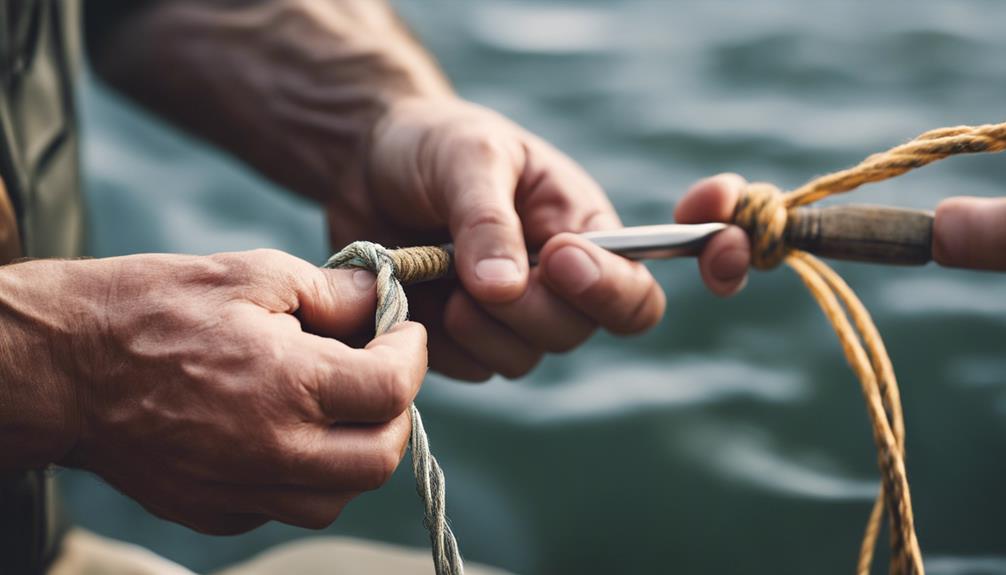
To start mastering the art of handline fishing, it's essential to get a firm grasp on essential knot tying techniques. Master knots like the Palomar knot, improved clinch knot, and loop knot to secure your hooks and lures to the main line. Knot strength and reliability are vital to avoid losing that big catch.
Practice tying knots with different fishing lines to adapt to various conditions. Utilize tools like knot-tying jigs or cards to aid in learning different knots. Remember to regularly inspect and test your knots to make sure they can withstand the pressure of reeling in your prized fish.
Perfecting your knot tying skills will make your handline fishing experience more enjoyable and successful.
Proper Casting Techniques
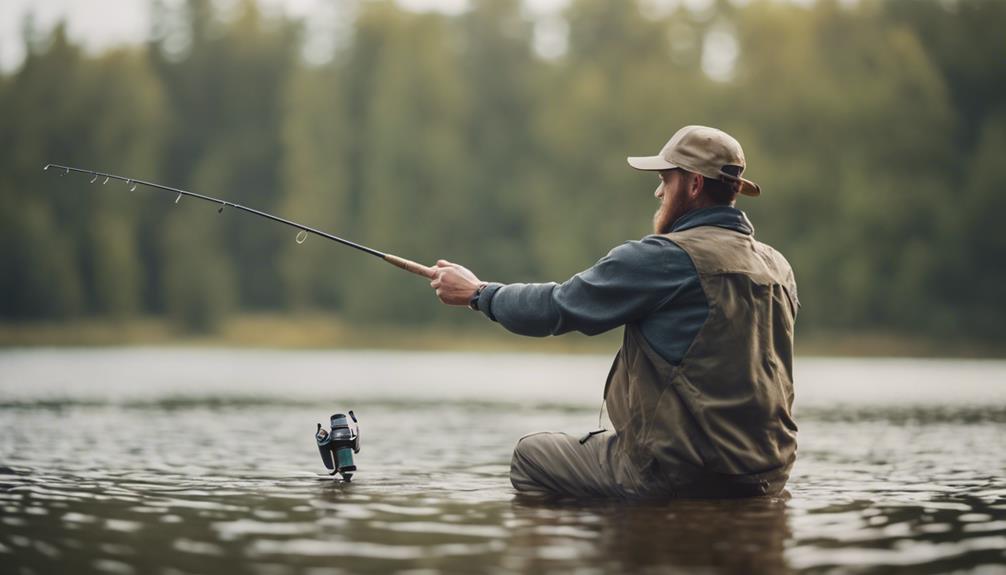
Alright, let's talk about proper casting techniques!
Remember to keep your wrist firm and release the line smoothly for accurate casting.
Practice in an open area to improve your skills and adjust your technique based on wind and water conditions.
Grip and Release
With a steady grip and smooth motion, master the art of releasing the hand line for prime casting success when hand lining as a beginner.
Hold the handline reel firmly with your dominant hand while guiding the line with your non-dominant hand for better control.
Remember to use a consistent motion when releasing the line, ensuring the bait reaches the desired distance.
Practice proper timing to prevent backlash or tangles by releasing the line at the right moment.
Adjust your grip on the handline reel to regulate the speed and distance of the cast according to the fishing environment.
Focus on accuracy and precision to target specific areas where fish are likely to be present.
Casting Distance Control
Mastering proper casting techniques involves more than just releasing the line – it's about finesse, control, and precision. When it comes to bottom fishing, achieving the right casting distance is vital for success. Here are some tips to help you improve your casting distance control:
- Adjust Your Casting Angle: Experiment with different angles to see how it affects the distance.
- Practice Consistent Casting Motion: Keeping a steady motion helps with accuracy and distance.
- Time Your Line Release: Release the line at the right moment to maximize casting distance.
- Adapt to Different Conditions: Practice in various environments to adapt your techniques.
- Focus on Precision: Aim for a specific target to improve your overall casting control.
Keep practicing, and you'll soon master the art of casting for bottom fishing!
Arm Movement Coordination
To cast accurately in handline fishing, make sure your arm movements are smooth and controlled to avoid tangling or backlash. Proper arm movement coordination is key for mastering this fishing method.
Keep your motions fluid and consistent to achieve the best casting distance and accuracy. Remember to practice in various conditions to hone your skills and adapt to different environments.
Use a combination of your wrist, forearm, and body movement to cast efficiently and effectively. By focusing on these techniques, you'll be able to cast like a pro in no time.
Hooking and Reeling Methods

Alright, let's talk about how to hook and reel in those fish! Remember, give a quick jerk to set the hook firmly, keep that line tight, and reel smoothly to avoid tangles.
Don't go overboard with the jerking, and adjust your reeling speed based on the fish's size and behavior. Let's get those fish on the line!
Proper Hook Placement
For a successful fishing experience, make sure your hook is placed securely through the bait to maintain its position during casting and retrieval. When it comes to proper hook placement with live bait:
- Use an appropriate hook size for the target fish species.
- Avoid deep hook sets to prevent fish injuries.
- Practice reeling techniques to control the fish during the fight.
- Experiment with different placements to attract and hook fish effectively.
- Confirm the hook is set firmly to increase hook-up success.
Smooth Reeling Motion
Get ready to level up your fishing game with the key to success – mastering the smooth reeling motion. To catch fish effectively, it's essential to develop a fluid reeling technique that prevents line tangles and guarantees a secure hook set.
When you feel a fish bite, swiftly set the hook to improve your chances of a successful catch. Focus on keeping a consistent reeling speed to maintain tension on the line and avoid losing your prize. Coordinate your wrist and arm movements smoothly to reel in a controlled manner without jerking the line.
Anticipate the fish's behavior and adjust your reeling technique accordingly for a smooth and efficient fishing experience. Mastering the smooth reeling motion is your ticket to reeling in those big catches!
Adjusting Line Tension
Ready to level up your hand lining skills? Adjusting line tension is key to mastering the art of hooking and reeling in those big catches efficiently.
Here are some essential tips to improve your fishing technique:
- Feel for Movements: Detect fish bites by sensing subtle movements or vibrations on the line.
- Set the Hook: Apply gentle pressure to set the hook when the fish takes the bait to avoid losing it.
- Maintain Consistent Tension: Keep the line taut while reeling in to prevent the fish from shaking the hook loose.
- Balance Tension: Find the right balance between keeping the fish hooked and avoiding breakage by adjusting line tension.
- Control Movement: Keep the line taut but not overly tight to allow the fish some freedom of movement.
Master these techniques for a successful fishing experience!
Fish Handling Tips
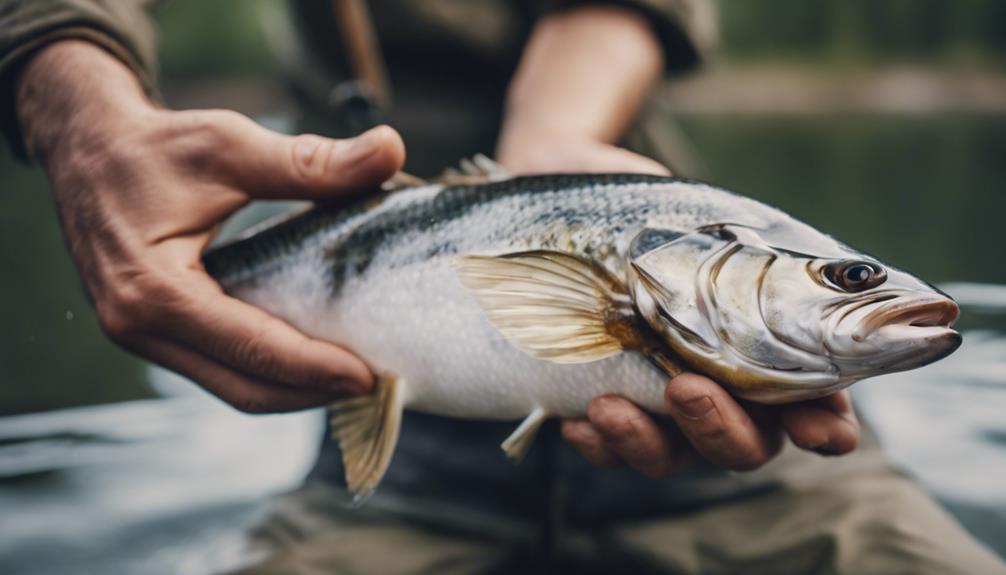
To handle fish properly, always remember to use wet hands to protect their slime layer. This is important, especially when dealing with larger fish. Avoid touching their gills or eyes to prevent harm.
When lifting a fish, support it horizontally to prevent injury to its internal organs. If you need to bring the fish out of the water, consider using a landing net for a safer switch.
Once you've caught your fish and admired it, release it gently and swiftly back into the water. This minimizes stress and gives the fish the best chance of survival.
Dealing With Snags
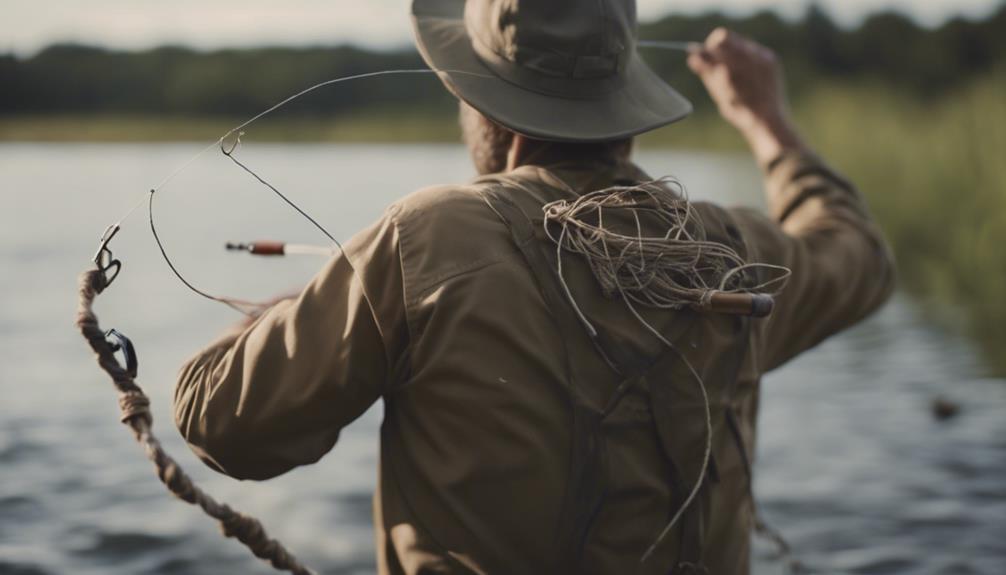
When your fishing line gets caught on something, gently maneuver it to free the snag without risking your gear or losing your catch. Dealing with snags can be tricky, especially when you're after small fish. Here are some tips to help you handle snags like a pro:
- Avoid pulling too hard: Prevent line breakage and losing your catch by applying gentle pressure.
- Use a steady hand: Work the snag free without causing damage to your line or hook.
- Change the angle: Try pulling from a different direction to dislodge the snag.
- Reel in carefully: If the snag persists, reel in and shake the bait or lure to release it.
- Be ready to cut: If all else fails, cut the line and re-tie your tackle to get back to fishing swiftly.
Safety Measures
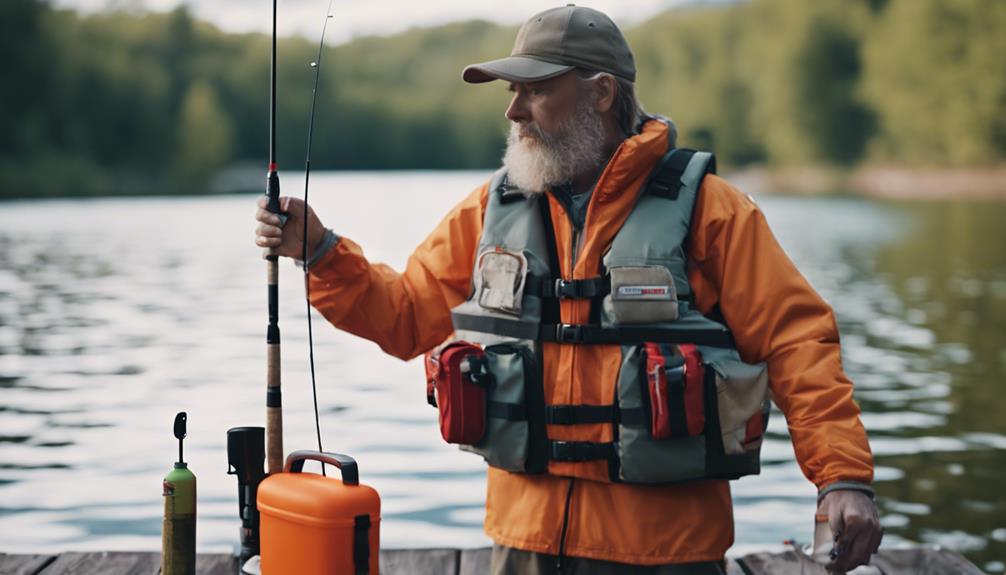
For safe and enjoyable handlining experiences, remember to always wear appropriate gloves to protect your hands from cuts and abrasions.
Additionally, using a shock absorber, like a shock leader, can help prevent the mainline from breaking when you're targeting larger or more powerful fish. This extra layer of guarantee that your line can withstand the force of these fish without snapping.
By taking these safety measures, you can focus on honing your handlining skills and reeling in your catch without worrying about potential accidents.
Stay prepared by carrying spare hooks in case of damage and always pack essential gear for any unexpected situations that may arise while out on the water.
Stay safe, have fun, and enjoy the thrill of handlining!
Conclusion
So there you have it, beginners! Remember to practice your handlining techniques with patience and persistence.
Don't be afraid to try different baits, hooks, and weights to see what works best for you.
And most importantly, have fun out there on the water! Happy fishing!
👨👩👧👦 Dwight’s a married dad of 4 who loves to cast a line 🎣 into both fresh and salt waters. His heart belongs to his family and the sea. 🌊 #FamilyMan #FishingLife #DadOf4 🐟✨

